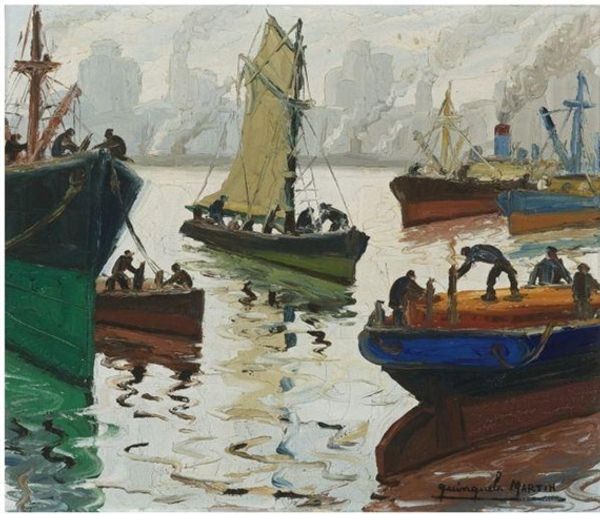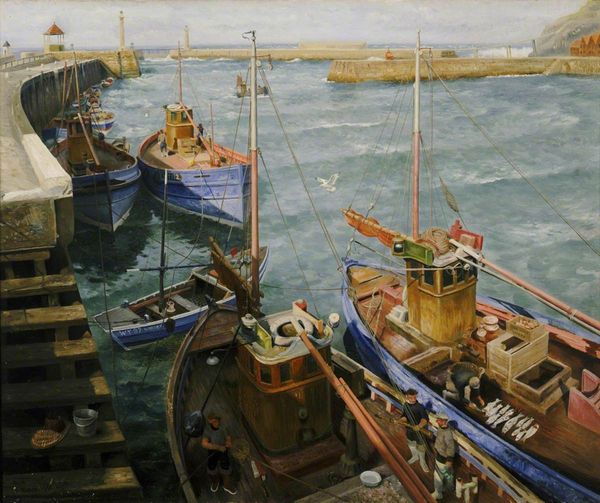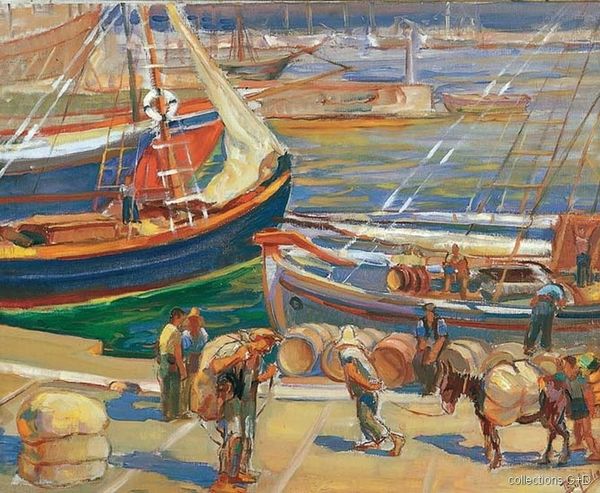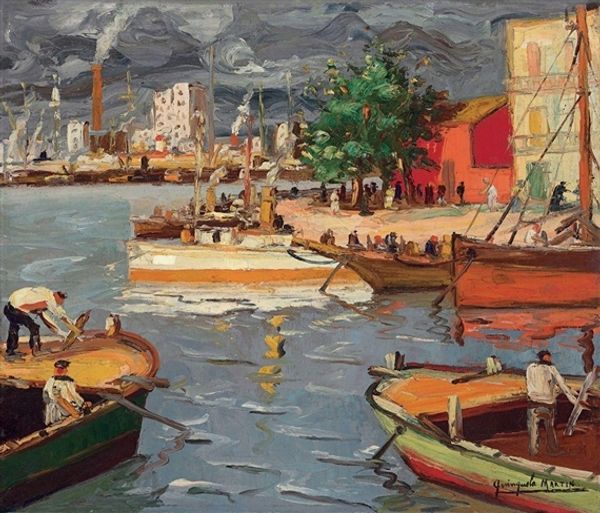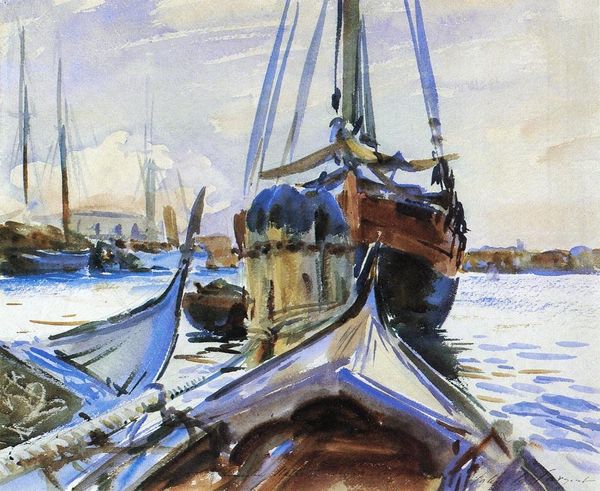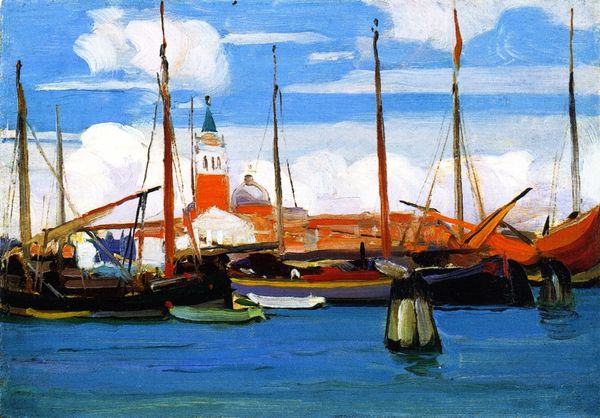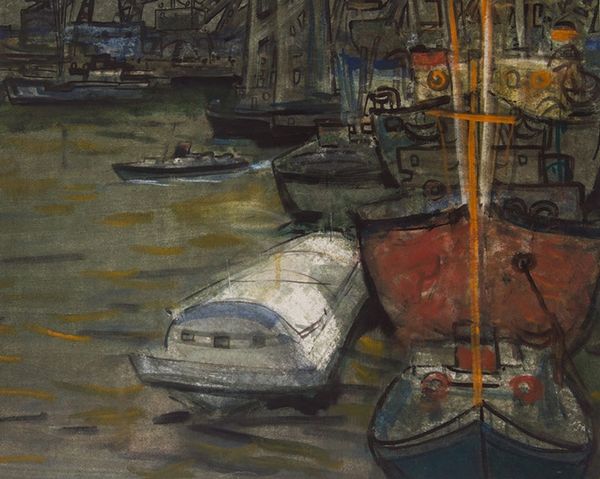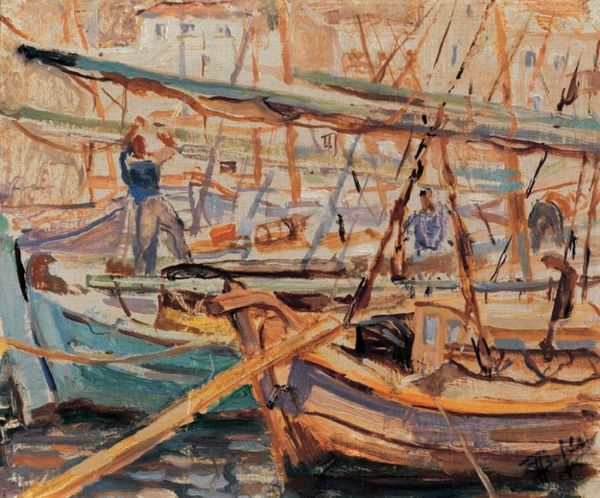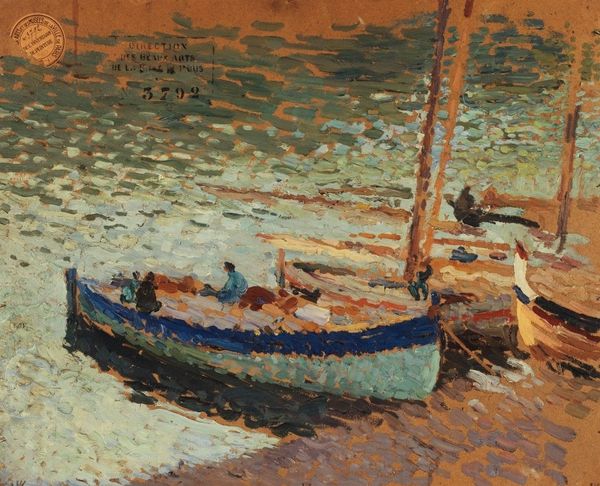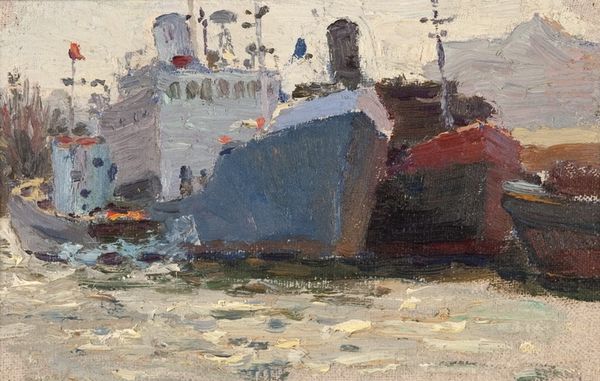
Dimensions: 48 x 29 cm
Copyright: Dmitry Nalbandyan,Fair Use
Editor: We're looking at "Batumi Port," painted in 1932 by Dmitry Nalbandyan. It's an oil painting showing a harbor full of boats, with visible brushstrokes. It makes me think of a busy, working waterfront. What stands out to you? Curator: It's fascinating how Nalbandyan captured this scene, particularly considering the socio-political context of 1930s Soviet Georgia. How does this image serve as a document of its time? Consider that this wasn't just any port, but one increasingly vital to Soviet trade and expansion. The port as a signifier of power. What feelings does it evoke when you consider its historical significance within Stalinist USSR? Editor: I guess I was just seeing it as a nice landscape. The thought of ‘power’ and Stalinism…not really! I hadn't connected those. Curator: Exactly. This isn't simply a tranquil seascape. It's a carefully constructed representation reflecting the values of the Soviet regime. Nalbandyan was later known as a prominent Soviet Realist painter, so how might his future trajectory already be visible here, even subtly? How might his technique or composition contribute to this underlying message? Editor: Maybe the slightly heroic way he depicts the boats? Like they're strong and ready for anything. And he uses impasto—lots of thick paint. Curator: Precisely. The active brushstrokes and realism give it a sense of progress and industry, fitting into the narrative the Soviet Union wanted to project. Looking at the boats closely, how do you think that a person who saw this work in 1932 felt about the future? Editor: Now I'm seeing that there's so much more than what meets the eye, it's incredible! Thanks for expanding my understanding! Curator: It’s all about perspective, how artworks reflect and shape cultural narratives. Thinking about art as cultural documents transforms how we appreciate it.
Comments
No comments
Be the first to comment and join the conversation on the ultimate creative platform.
